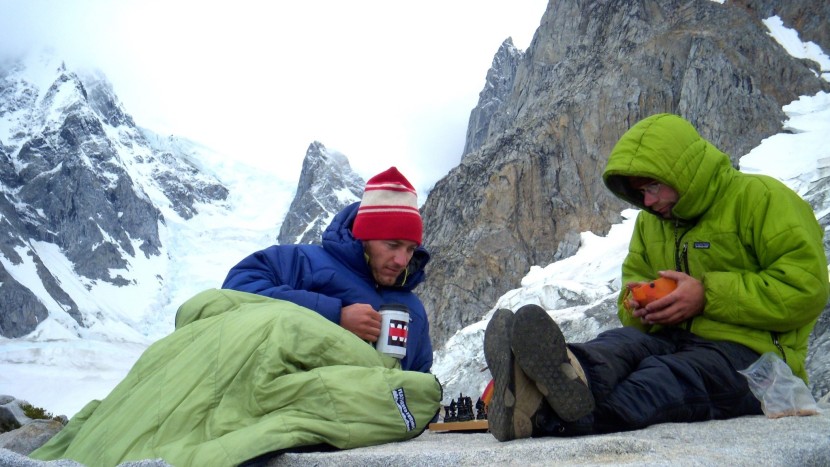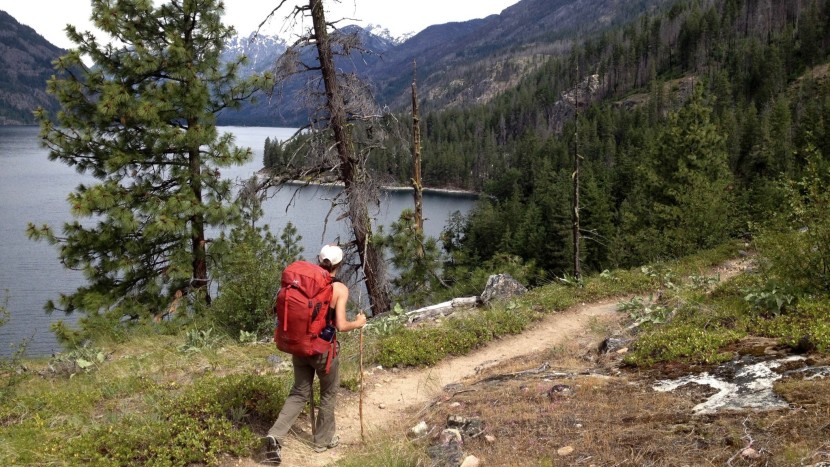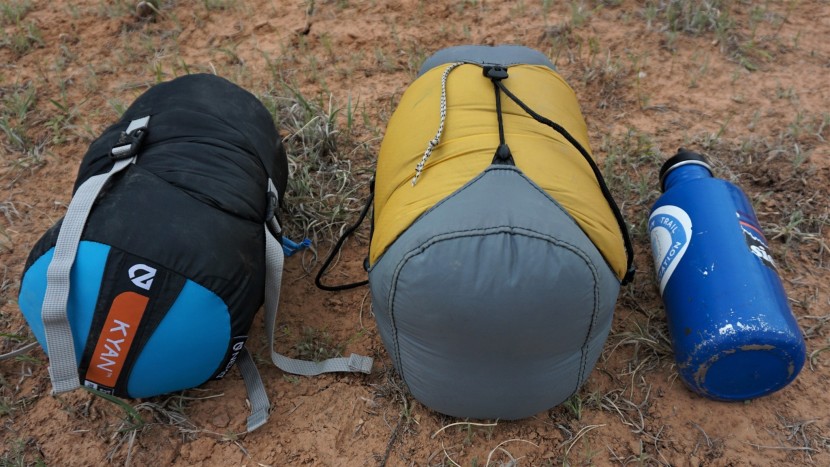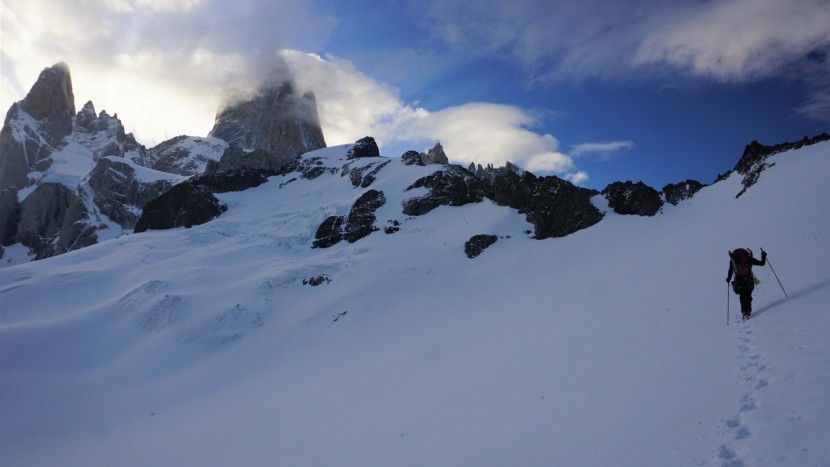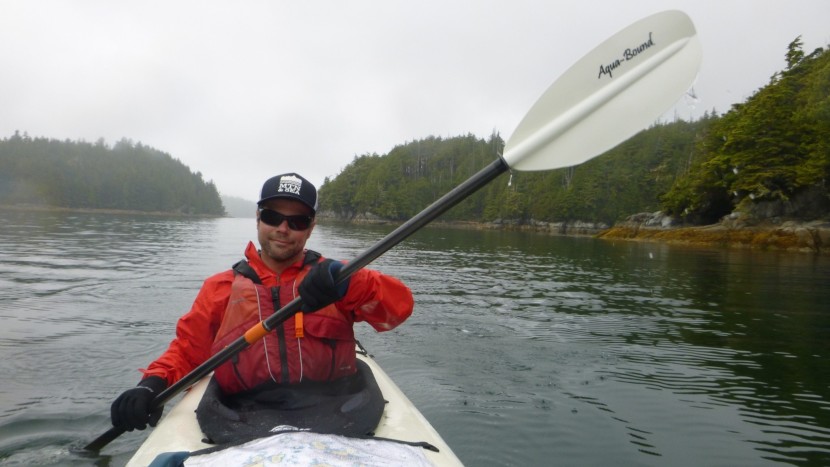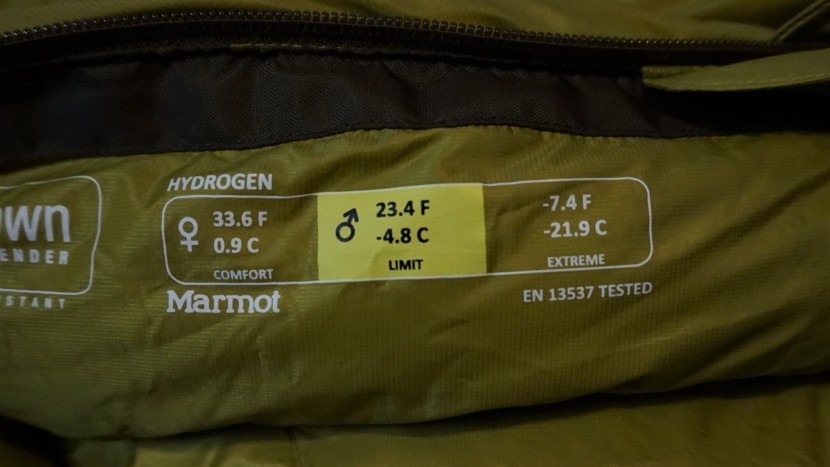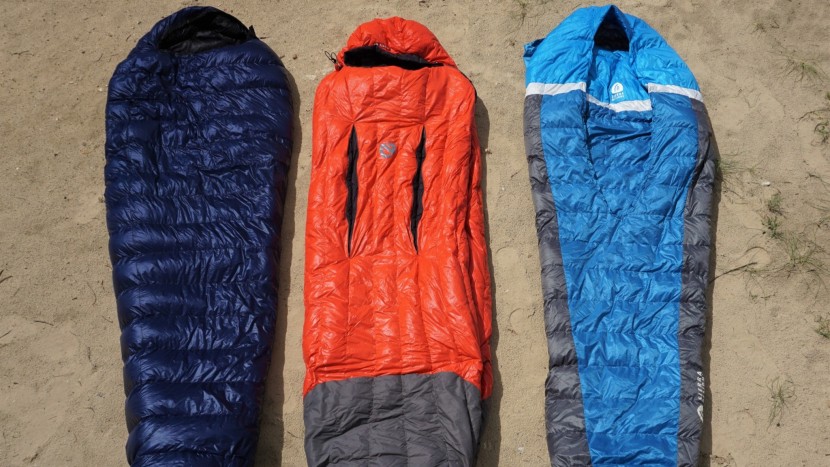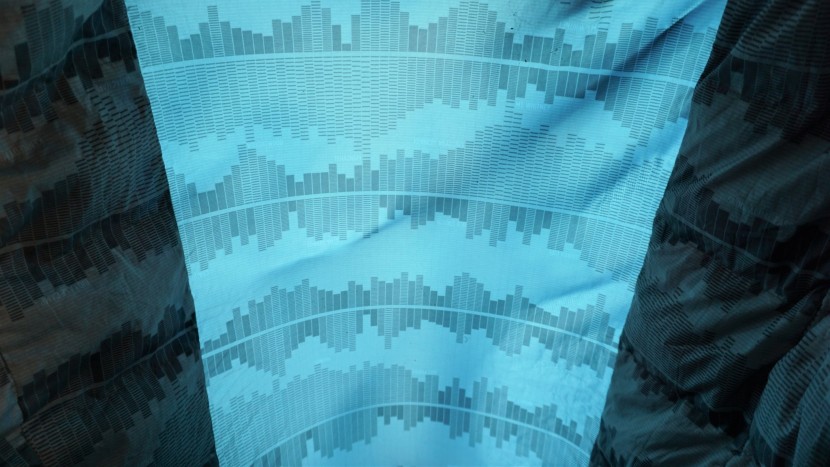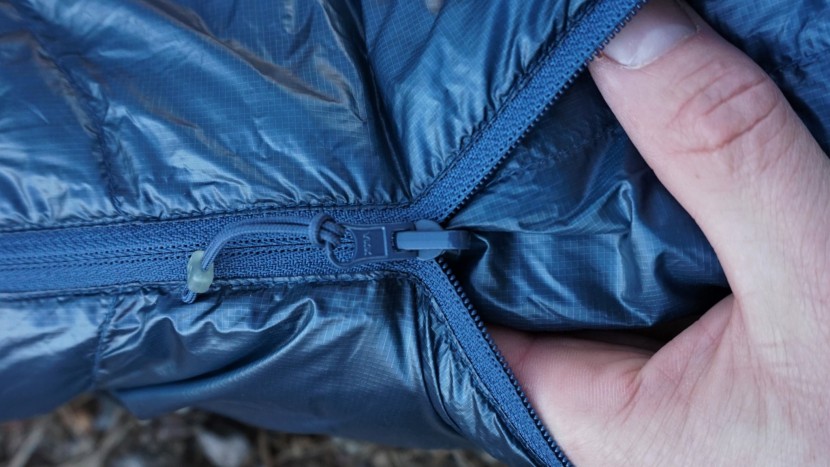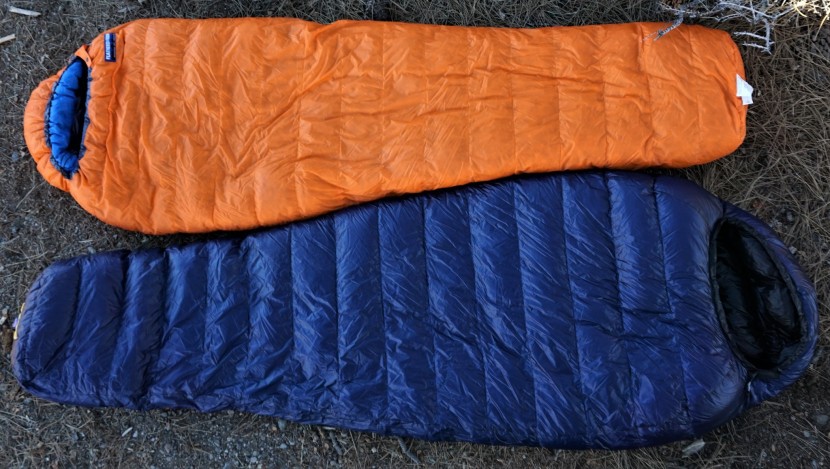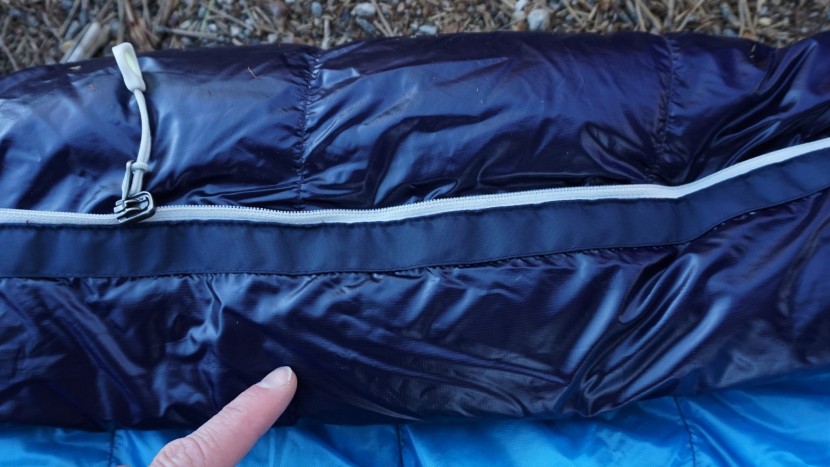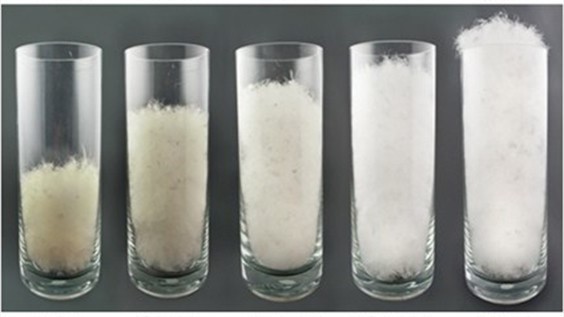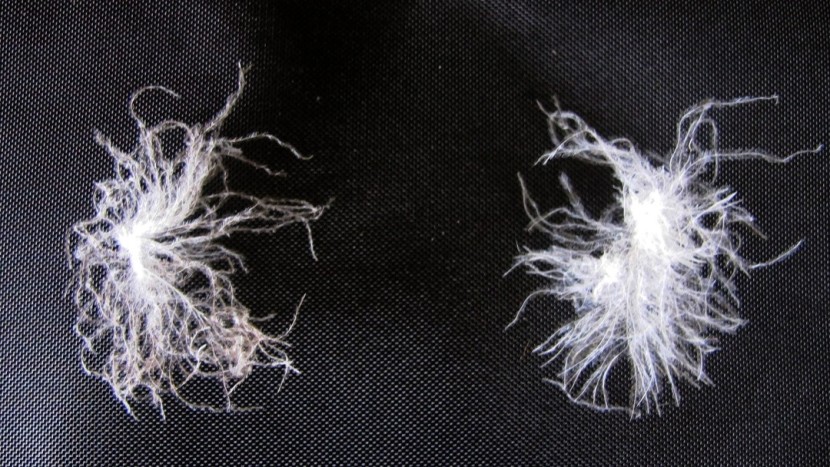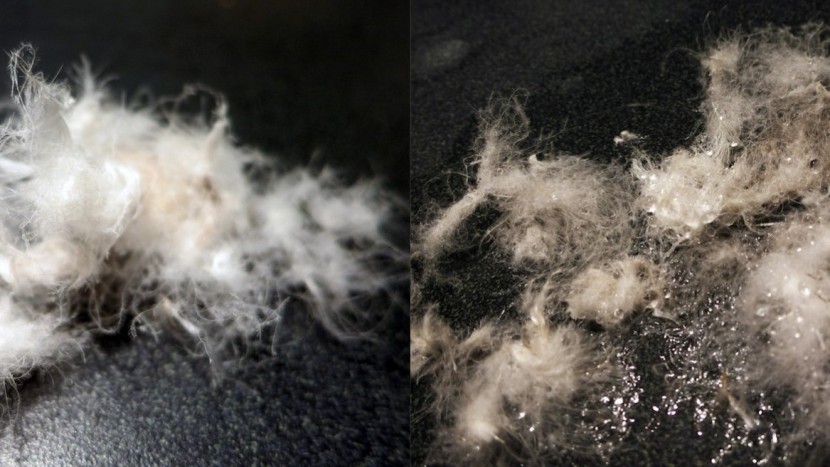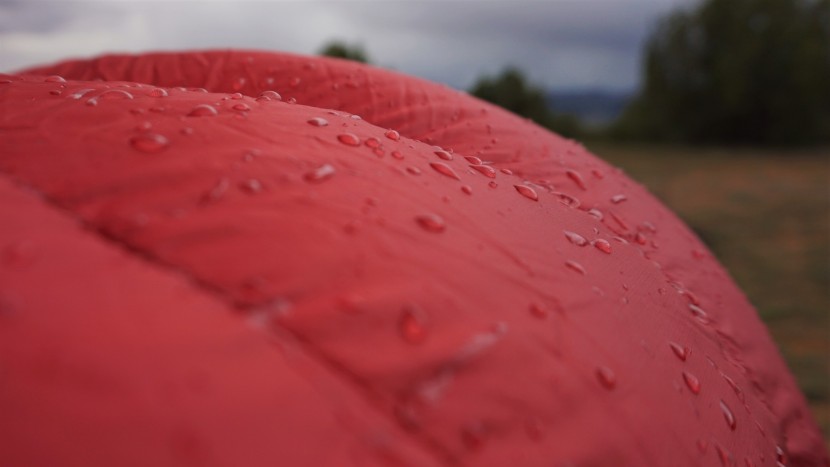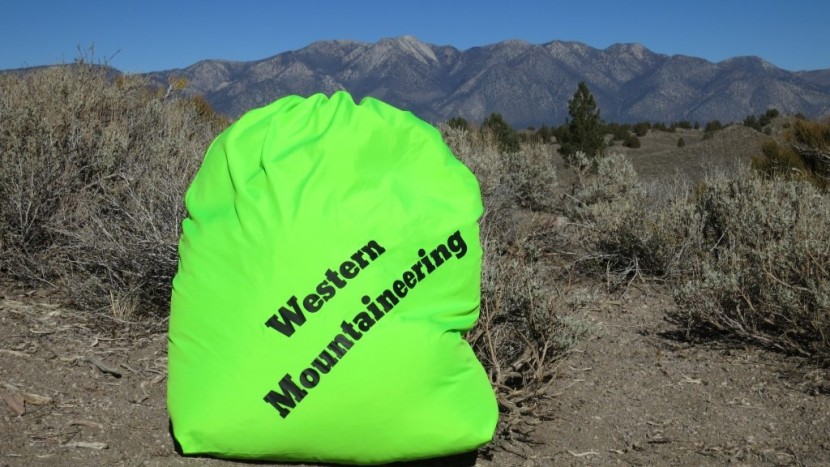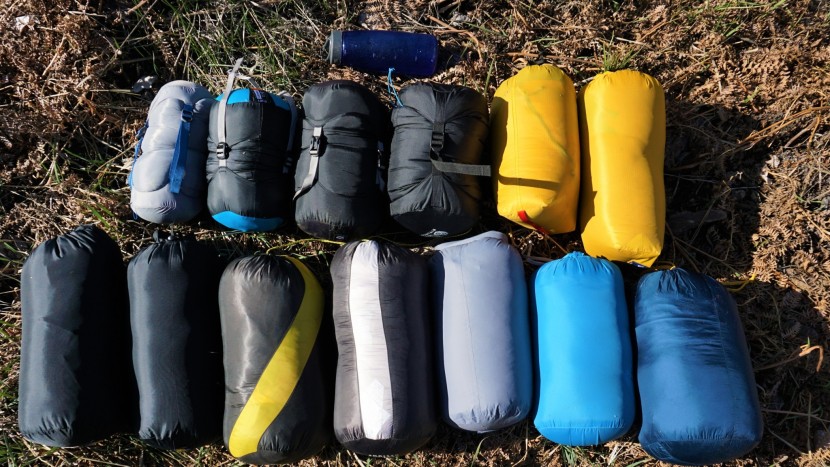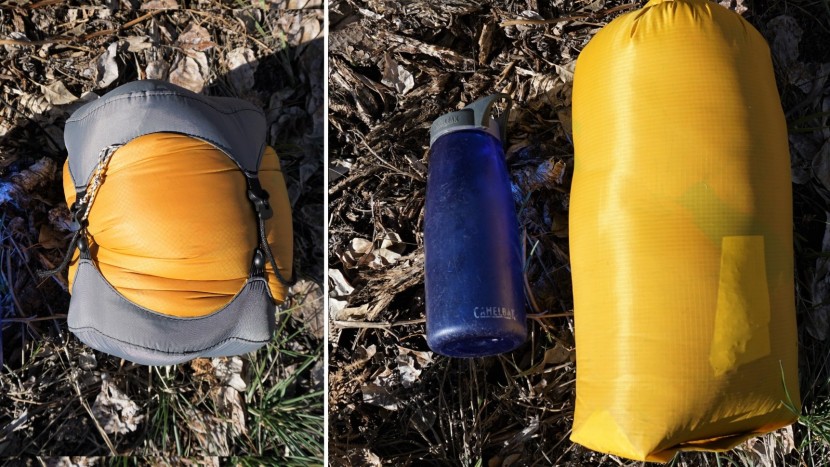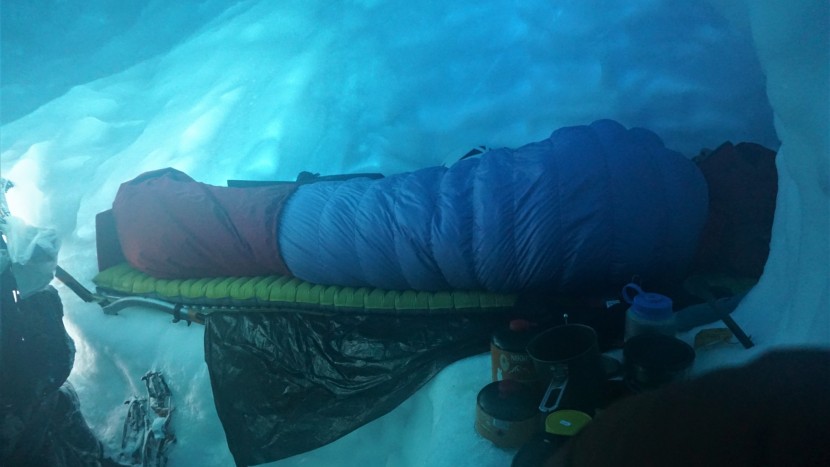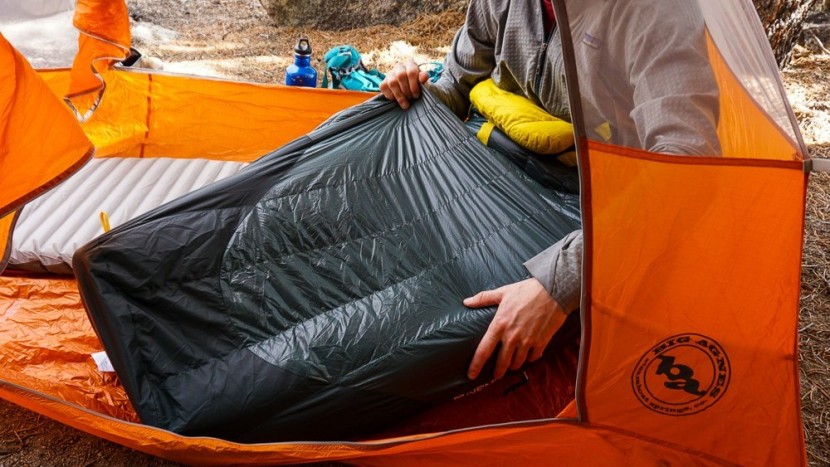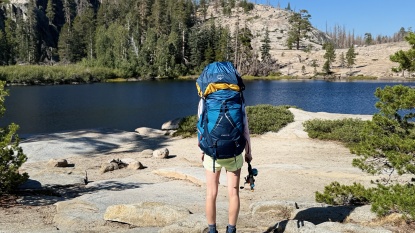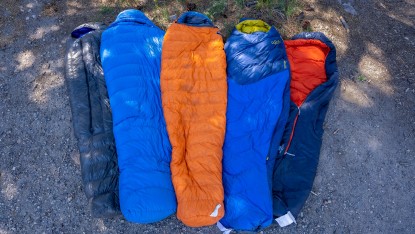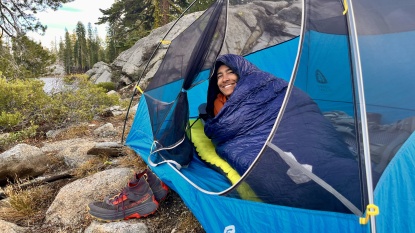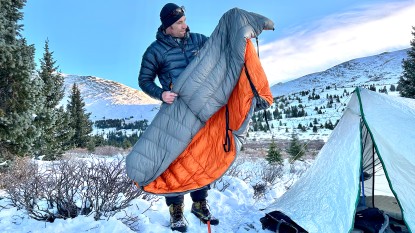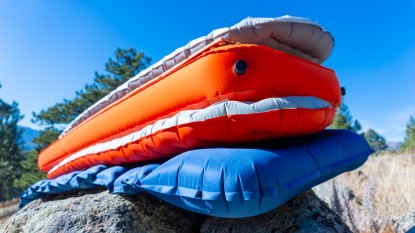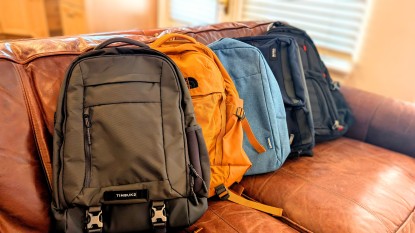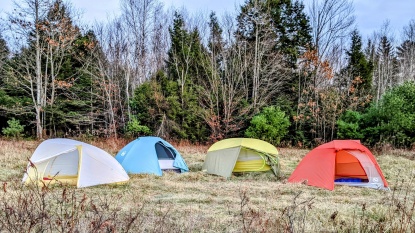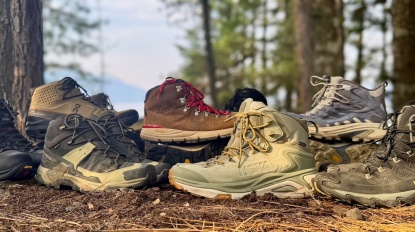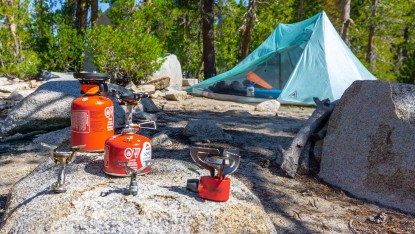Sleeping bags are one of the most critical components of your overnight kit. A poor sleeping bag can quickly turn your dream trip into sleepless insomnia. Remember, proper sleep helps your body recover and ensures you can enjoy the next day's hike. Sleeping bags are also the most efficient gear for keeping your body warm, providing much higher warmth than clothing for the carried weight. Thus, for the weight-conscious adventurer, choosing the right bag is arguably one of the best ways to reduce the weight of your overall backcountry kit.
Start by thinking about where and when you'll most often use your sleeping bag. You don't necessarily need to buy a bag for the coldest trip you might someday go on. Instead, buy a bag for the types of overnights you do most frequently. When the rare cold trip does arise, there are several steps you can take to make a less-than-ideal bag work. For example, extra clothing layers, a thicker sleeping pad, or a well-sealed bottle of boiling water can boost your warmth in any sleeping system. These strategies will save you from carrying an unnecessarily heavy bag that is too warm for most of your trips.
Insulation Options
The first and arguably most important factor to consider when purchasing a sleeping bag is the type of insulation. Backpacking sleeping bags are available with two primary types of insulation: down feathers or synthetic fibers. There are numerous variations of both down and synthetic, which we will discuss later in this article.
When choosing the type of insulation, consider the environment and conditions in which the bag will be used, along with your budget and experience level. Generally, down bags perform better in dry locations because they weigh less and pack smaller than synthetic bags of equivalent warmth. When down feathers get wet, however, they clump and lose their insulating ability. For this reason, we recommend synthetics for wet climates or inexperienced users who are less adept at keeping their sleeping bags dry. Another critical factor is price. Premium down can cost several times more than a comparable synthetic option. However, this drawback is somewhat negated by the longevity of down, which can usually maintain its loft better after repeated packing and unpacking.
Down
In the current backpacking product landscape, down is king. Despite advances in synthetic materials, down provides a much higher warmth-to-weight ratio and better compressibility than its synthetic counterparts. In our tests, down weighed roughly 30% less and packed 15% smaller than synthetics of the same warmth. Even with these advantages, our review team still thinks the biggest reason to buy down is the durability of the feathers. When cared for properly — meaning stored clean, dry, and uncompressed — down bags can last an average backpacker up to 20 years. Synthetic bags, in contrast, can lose a substantial portion of their warmth in just a few years.
The primary downside to down is that it is more expensive and practically worthless when it's wet because the feather clusters clump together and lose their loft. Another issue worsens this fact: after getting wet, down takes roughly five times longer to dry than synthetic fibers. Despite these disadvantages, down is still widely considered superior to synthetics for most backpacking applications. For this reason — and because it was difficult to identify many popular, premium synthetic options — we've so far chosen to review more down bags.
Synthetic
The limited number of synthetic bags we chose to include in the backpacking review demonstrated a better ability to maintain loft when wet and dried much faster than their down counterparts. The old mantra of “synthetic bags keep you warm, when wet” remains mostly true, but it's worth recognizing that a soaking wet sleeping bag still loses significant warmth even if it's filled with synthetic fibers.
The much more significant advantage of synthetics is their significantly quicker drying times. In our side-by-side testing, synthetic bags dried in roughly 20% of the time required by a comparably wet down bag. Soaking wet bags and drying times aside, due to the disadvantages of synthetics in weight, packed size, and longevity, our review team believes down bags are the better option for most overnight travelers if they are willing to spend the extra money.
Keeping a down bag dry shouldn't be that challenging under most circumstances. Good strategies can be as simple as lining your bag's stuff sack with a plastic trash bag or purchasing a waterproof stuff sack. This simple step will protect your bag while hiking through driving rain or when a rogue, leaky water bottle strikes. Once in a camp, keep your tent well ventilated and use a small piece of sponge to wipe off any surface condensation from the walls. One tester even guides in the notoriously damp Pacific Northwest and exclusively uses down bags. With that said, for particularly wet activities (coastal hiking, kayak camping, etc.), synthetics can improve your safety margin and will dry much quicker.
Temperature Rating
After choosing an insulation type, the next big decision for a sleeping bag shopper is the temperature rating. For this review, we aimed to select the best backpacking sleeping bags for use in spring, summer, and fall. Based on experience, this translates into bags with manufacturer temperature ratings between 20°F and 35°F. Depending on your location, planned activities, and personal metabolism (are you a “hot” versus a “cold” sleeper?), you will likely want to choose a bag within this range for 3-season use.
The difference, however, between the warmth a bag provides at the lower and upper end of this temperature range is much larger than the 15°F difference would suggest. The biggest reason for this is inconsistencies in how manufacturers assign their temperature ratings. To resolve such issues, manufacturers have begun to test their bags according to the European Norm 13537, a standardized test designed to measure sleeping bag warmth.
The official test uses a copper mannequin, lying on top of a thin sleeping pad, and fitted with long underwear, socks, and 20 sensors. The mannequin lies inside a sleeping bag in a temperature-controlled room while its sensors and mathematical models attempt to estimate the bag's warmth. Results from EN testing provide us with three numbers:
Comfort Limit: Based on a “standard” woman having a comfortable night's sleepLower Limit: The lowest temperature a “standard” man can sleep comfortably
Extreme Rating: A survival rating for a standard woman
(Note that women generally sleep colder than men. Most women's specific sleeping pads and women's sleeping bags are slightly warmer than their standard counterparts.)
We find these numbers useful for comparing bags for relative warmth. EN temperature ratings aren't as helpful for choosing a bag based on the temperature forecast because your actual warmth can be heavily influenced by your shelter, sleeping pad, exertion level, or nutrition. Bringing a 20°F bag for a night with an actual low of 20°F will often result in discomfort. Instead, choose the EN temperature rating for your new bag based on the EN temperature rating of your old bag or other bags you've used.
If this is your first bag, we suggest selecting one with a warmth rating 15°F better than the forecasted overnight temperature. We suggest bags at the upper end of the range (30-35°F) for 3-season use at lower elevations or summer use at higher elevations. Bags at the lower end of the spectrum (20-25°F) are better suited for cold sleepers, higher altitudes, and shoulder seasons.
A further complication is that many of the highest-scoring bags are not EN tested. This could be because they're made by small companies that can't afford the expensive test, or because a bag's design may not be compatible with the strict testing protocols. In our testing, the manufacturer's temperature rating of the ultra-premium Feathered Friends and Western Mountaineering bags performed roughly 5°F better than advertised.
Backpacking Sleeping Bag Shapes
Traditional
The classic sleeping bag fully encloses the user's top, bottom, and foot area using a zipper and adjustable hood to keep the head warm. These bags are commonly called “mummy bags” because of their sarcophagus-like shape, tapering from head to toe.
Traditional style bags have been criticized in some situations and come with their own disadvantages, but they remain the most popular design because of their thermal efficiency. Traditional bags also adapt to different environments easily and are user-friendly. They are, thus, a good choice for most backcountry travelers.
One of the primary drawbacks to traditional bags is the added weight of compressed insulation beneath the body that does little to increase warmth. Insulation works by trapping warm air in the tiny dead air spaces between feathers/fibers close to your body. When compressed, there is no room for dead air spaces to form and trap warm air. Whether you sleep on your side, back, or stomach, the material beneath your body compresses to the point that it can't provide significant insulation. So the weight of this insulation is wasted because it contributes little to your warmth.
Another disadvantage is the zipper. Zippers enable simple entry and exit, and they add weight. Extra sewing is needed to attach them to the bag, and an additional draft tube is needed to ensure that warmth does not escape through the zipper's teeth. Some models reduce the zipper length from full to 3/4- or 1/2-length. This can improve the bag's warmth-to-weight ratio but reduces your ability to vent excess heat on warm nights. Sierra Designs has tried to solve the zipper problem by removing zippers entirely. Instead, their bags feature a large opening on top for entry/exit that seals with a blanket-like fabric flap. This solution saves weight and improves comfort, but at the cost of a less secure closure.
The other problem sleeping bag zippers often create is frustrating snags. It may sound minor, but it can be challenging to escape a sleeping bag when your whole body is inside, and the zipper decides to snag. Fortunately, many sleeping bag makers are now dealing with this issue using new Y-shaped, anti-snag zippers. Some manufacturers also incorporate internal plastic strips to stiffen the fabric adjacent to the zipper and keep it away from its teeth. We've found this clever design surprisingly effective with no reduction in comfort.
Other Bag Types
Despite the disadvantages of traditional style bags, we consider them the best choice for most three-season applications. They are a popular and reliable option for anyone hoping for a good night's sleep across a wide range of conditions and temperature ranges. For these reasons, our backpacking sleeping review only considers traditional bags. However, non-traditional sleeping bags may be more appropriate for ultralight backpacking or other specialty applications. Check out our review of ultralight bags for a better look at quilts, hood-less, and back-less sleeping systems.
Traditional Sleeping Bag Fit
Choosing the right fit for a sleeping bag means looking for a balance between thermal efficiency and comfort. The most thermally efficient bags will fit snugly around your body to seal out drafts and leave little additional air space inside the bag that your body needs to heat. An overly snug fit, however, can be rather uncomfortable and is one reason side sleepers often complain about traditional bags. Also, when a bag is too small, your body can push against the insulation, compressing the loft and creating cold spots. This often occurs with tall people in small tents pressing the foot or head of their bag against the tent walls.
To solve these issues, some mummy bags are now sewn wider to give additional room to roll around. Another solution has been to change the shape of bags from the classic sarcophagus shape to more of a broad hourglass. Regardless of the manufacturer, choose a bag that is the correct length, ensuring that your head and feet won't compress the bag's insulation and compromise your warmth.
Construction
Baffles are internal pieces of fabric that keep a backpacking sleeping bag's insulation in place. Three-season down bags use three major styles of baffles to ensure insulation doesn't shift and create unwanted cold spots.
Sewn-Through
These baffles have a seam that pierces through both interior and exterior fabrics. You can usually identify them by their checkerboard-like appearance. These baffles are the simplest, cheapest, and coldest way to build a sleeping bag.
Vertical baffles
Vertical baffles run length-wise from the bag's head to toe, and act as internal “walls” to prevent the insulation from migrating. Vertical baffles make it easy to construct comfortable hoods and toe boxes.
Horizontal baffles
These baffles create the highest warmth-to-weight ratio and are incorporated into our favorite three-season and winter bags. Their primary benefit comes from the superior versatility of moving feathers between the top and bottom of the bag. This effectively lets you adjust the bag's temperature rating, add feathers to the top for extra insulation on cold nights, or move them underneath your body when it's hot out. Horizontal baffles, however, are also the trickiest to sew, and thus, the most expensive.
Secondary Baffles
Neck baffles
A neck baffle (also known as a draft collar) is a tube of insulation near the hood opening of a bag that prevents heat loss from the main compartment of a sleeping bag. Although neck baffles generally have an internal elastic cord that can be cinched to ensure a snug fit around your neck and shoulders, some models now use extended pieces of fabric you tuck beneath your shoulders to keep the baffle in place.
Neck baffles are essential for cold winter applications, but their necessity on a three-season bag is debatable. Deciding whether to get a bag with a neck baffle in the 20-35°F temperature range comes to personal preference. Our testers believe most neck baffle designs boost the overall usable temperature range while making things a little more stuffy on warm nights.
Draft tube
It's easy to confuse draft tubes with draft collars (a.k.a. neck baffles). Draft tubes, however, are tubes of insulation that prevent heat loss through the closed zipper of a bag. These are especially important with center zip bags, where the zipper placement above the body increases the potential for warm air to rise and escape. Fortunately, most backpacking sleeping bags in this review have adequate draft tubes. However, the absence of a draft tube can be a real problem for some budget and car-camping sleeping bags.
Shell Fabric
Shell fabric quality is typically reported with a metric called denier. Denier, represented by the number followed by a capital 'D', is a measurement of the linear density of fiber. For example, a single strand of silk is one denier (1D), and it goes up from there for most sleeping bag shell fabrics. Denier is a rough way to evaluate the strength and durability of a fabric.
Although most people associate higher denier numbers with higher fabric strength, it is a somewhat imprecise measure because denier describes the individual fibers. Yet fabric strength is also influenced by how the strands are woven together. Practically speaking, you could find a poorly woven 15D nylon that would be less downproof and weaker than a 7-denier nylon. However, you're unlikely to find a 25D sleeping bag fabric where you could say the same thing about.
Even though lower denier usually means less puncture and abrasion resistance, we must remember that no sleeping bag we tested is extremely durable. Even the bag with the highest denier material will tear if it rubs up against rocks or comes into contact with sharp objects. In contrast, equipment designed to withstand abrasion, such as backpacks, is typically made from 250D fabrics with 500- 1000D in high wear areas.
Overall, we don't typically find the lower denier bags at a significant disadvantage because sleeping bags don't see that much wear and tear, as far as abrasions go. Most things that could cut a hole in a 10D bag would cut a 30D bag just as quickly.
The Details of Down
Fill Power and Fill Weight
Not all down is created equal. To quantify the differences, down used in the outdoor recreation world is assigned a fill power (often abbreviated "FP"), a quality or loft rating indicating how much insulation a given amount of down provides. The higher fill power indicates more insulation for a given weight, resulting in a higher overall warmth-to-weight ratio. This benefit, however, comes with a hefty price tag. Premium 900+ FP bags often cost several hundred dollars more than budget 600 FP bags.
Fill power can also help explain the difference between goose and duck down. According to the International Down and Feather Testing Laboratory, geese more consistently produce a higher volume of higher-quality down with better longevity than ducks. However, this fact doesn't mean that all goose down is better than all duck down. Ducks are still capable of producing high-quality 800+ FP down. They just produce less of it.
What does all this mean for the sleeping bag shopper? Insulation with identical fill power, whether from a goose or a duck, should provide similar loft and warmth. Goose down, however, is generally composed of larger feather clusters that may offer slightly more longevity.
In addition to fill power, fill weightgreatly impacts a sleeping bag's warmth. Fill weight is simply the physical weight of down in a bag. All things equal, more down in a bag will make it warmer. Keep in mind, though, that the cut and design of a bag can also influence how well it seals in air and keeps you warm. In the absence of precise ways to measure that design, however, comparing the fill power and fill weight between different bags is useful for comparing warmth. For example, an 800 fill power bag with a 16-ounce fill weight will almost certainly be warmer than an 800 fill power bag with 12 ounces of down.
Hydrophobic Down
A recent trend in down sleeping bags and garments is to market hydrophobic down. From the Greek word meaning “water-fearing,” this down receives a proprietary chemical treatment intended to make the feathers resist water absorption and reduce drying time. Some companies have claimed that their treated down “stays dry ten times longer, retains 170% more loft when exposed to moisture, and dries 33% faster than untreated down.” Our only problem with statements like this is that they tend to be quite vague, and rarely specify what those numbers are compared to.
In our side-by-side tests, we could not replicate results that were even close to these manufacturer claims. In the lab as well as in the field, we found there was some difference, but it wasn't enormous. With light amounts of water in our spray bottle test, treated down did appear to absorb less water and dried roughly 25% faster than untreated down. In our “full soak test,” there was even less of a difference with more similar drying times.
Interestingly, the two best-performing manufacturers in this review — Western Mountaineering and Feathered Friends — do not currently use hydrophobic down. Separately, both brands raise questions about the longevity of chemical hydrophobic treatments and emphasize that high-quality down already contains natural water-repellent oils. With so much uncertainty about the benefits and little difference observed in our real-world tests, we don't believe hydrophobic down is currently worth factoring into your purchase decision. If moisture is truly a concern for you, avoid down and buy synthetic.
Ethical Issues
Down is harvested in a variety of ways. Some birds are killed for their down and meat, while others are killed solely for their down. Some birds, geese, in particular, are live-plucked of their breast feathers. Others, such as the eider duck, line their nests with down, making harvest a pain-free, but labor-intensive, process. Many animal rights activists consider live-plucking to be a cruel practice, especially because it repeatedly happens to the same bird. In response, many outdoor manufacturers now use down only harvested humanely from non-force-fed or live-plucked birds. For more on ethical down, check the two primary certification protocols for humane down: the Traceable Down Standard and Responsible Down Standard.
Care of The Sleeping Bag
Proper care is essential for prolonging the life of your sleeping bag, regardless of the insulation type. Proper care will help maintain your bag's loft, preserving its warmth and temperature ratings for years to come. In the short term, keeping down bags dry is essential to maintain their function as an insulating layer during your trip. However, if it does get soaked, it isn't necessarily bad for it over the long term. You just might have to endure a few cold nights before you can dry it out again.
Regardless of insulation type, all sleeping bags should be stored in a large, breathable storage bag where the down or synthetic insulation is not compressed at all. If your bag didn't include a storage sack or you happen to lose it, many bags also have sewn loops on the hood and footbox for hanging in a closet uncompressed. Washing down bags with a very mild soap designed for washing down garments and sleeping bags is essential to keep you and your tentmates happy. Western Mountaineering and Feathered Friends both have excellent pages dedicated to the proper care of down sleeping bags and garments.
Synthetic sleeping bags require less maintenance in the short term. They can experience more moisture, remain warm, and are generally less fragile than their down counterparts. For example, if you put a big hole in a down bag, feathers will fly everywhere. Do the same with a synthetic bag and you'll get a peek at the internal fibrous mesh with little chance of losing anything.
Synthetic bags are also easier and less stressful to wash because the insulation does not tend to clump when wet. However, the nature of synthetic fibers leads them to deteriorate more quickly than down. It is imperative to avoid compressing these bags for an extended period, as the more the fibers get squeezed, the faster they break down and lose their insulating qualities. For this reason, a high-quality down sleeping bag is a better investment in the long run because down feathers can withstand significantly more compression cycles than synthetics.
Packed Size
Smaller is always better when it comes to the packed size of a sleeping bag. However, in our tests, we discovered that the compressed volume of the bag corresponded very closely with its weight. This relationship means that although pack size is an important characteristic of sleeping bags, if you have already factored weight into your decision, pack size is largely a redundant consideration.
Compression and Stuff Sacks
For this review, we define a compression sack as a sack that uses buckles and straps, or some other mechanical advantage, to compress a sleeping bag into a compact size. Stuff sacks, in contrast, depend on the strength of your own hands to stuff a sleeping bag into a simple sack with a drawstring closure. Stuff sacks also have a fixed, non-adjustable volume. Both types of sacks can be used to store the sleeping bag in your pack, but a compression sack is much better at compressing a bag into a compact size.
If your bag doesn't include a compression sack and space is at a premium in your pack, get yourself an appropriately sized compression sack. For advice on that choice, see our excellent article on selecting the best compression sack.
Tips and Tricks
We've spent way too many nights in the backcountry and learned these advanced tricks for sleeping comfortably during that time.
- To prevent the footbox of your bag from absorbing condensation on the tent wall, wrap the bottom of your bag in your hardshell jacket. How: close the jacket's front zipper, tuck the hood and arms inside, and slide the jacket over the foot of the bag. This action is more important with down bags than synthetic ones, but don't try it if your jacket is wet. Keep the jacket's arms out and open the pit zips if you find that the jacket isn't breathing enough.
- Dress well. Wearing excess layers in a trim-fitting bag will compress the insulation, preventing it from lofting to its fullest and keeping you warm. On the contrary, adding layers will take up dead air space if the bag is too roomy. Finally, the popular myth that it's warmer to sleep naked inside a sleeping bag is simply that, a myth. Getting into a bag nude will likely help the bag warm up quicker at the beginning of the night, but warmth throughout the night will be lower.
- Keep your bag dry. Line your stuff sack with an extra-thick trash bag, compress the sleeping bag, twist the garbage bag, and tuck it into the stuff sack, and compress further. For multi-day trips, we recommend lining your backpack with an extra-thick trash bag and packing everything inside. This system will keep the contents of your pack dry even if it gets fully submerged.


